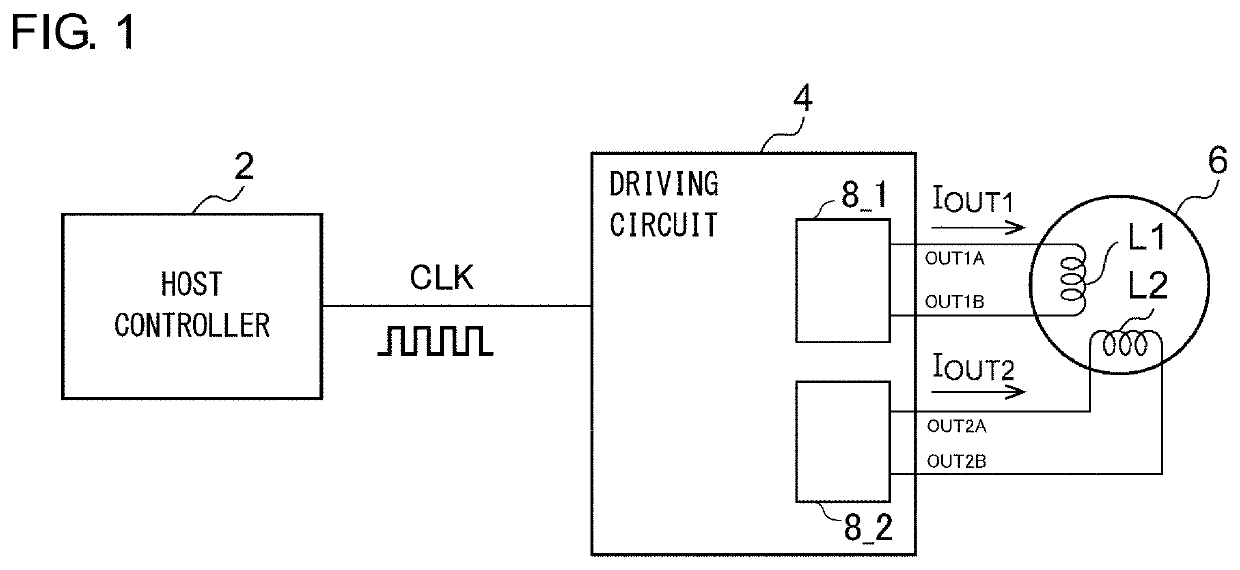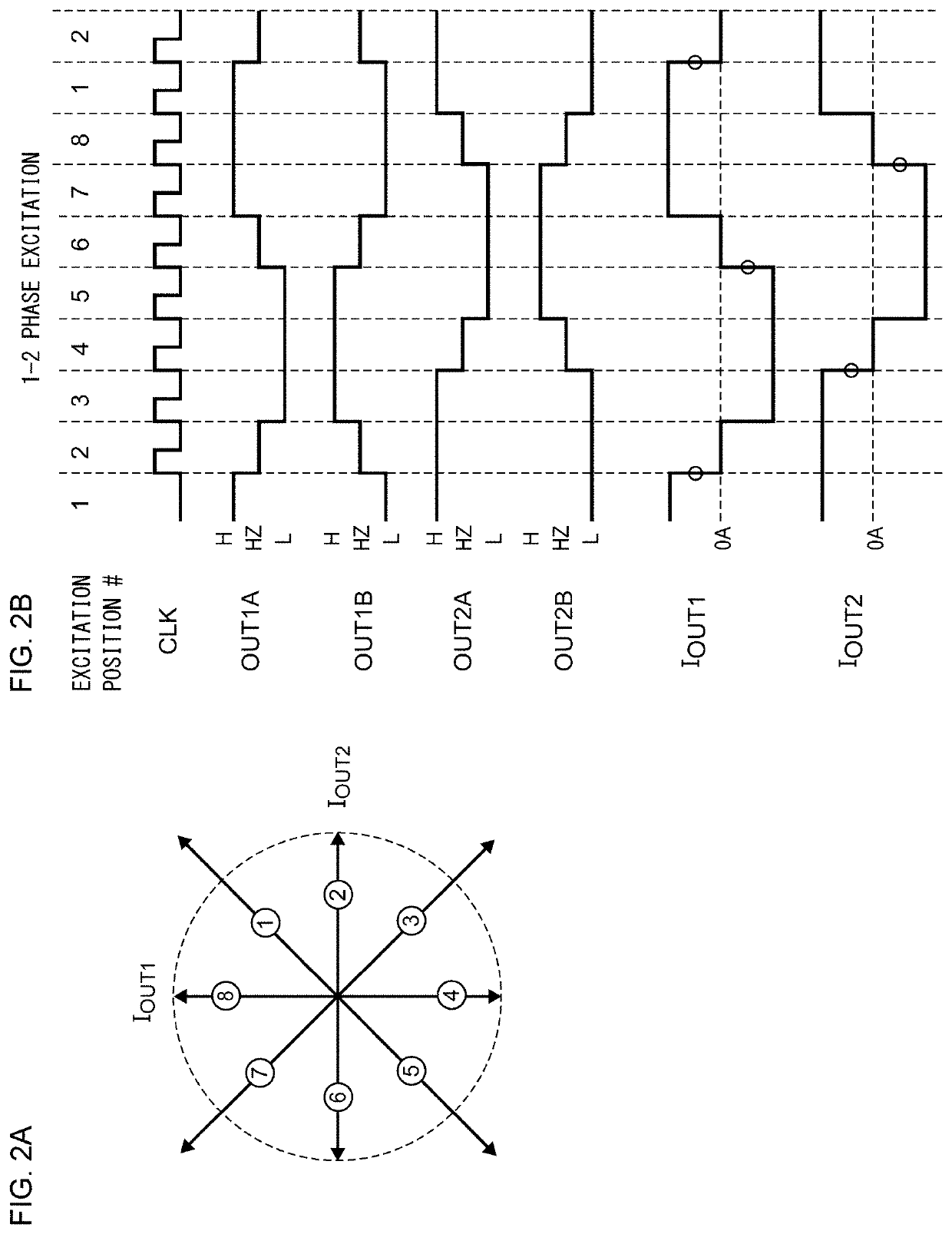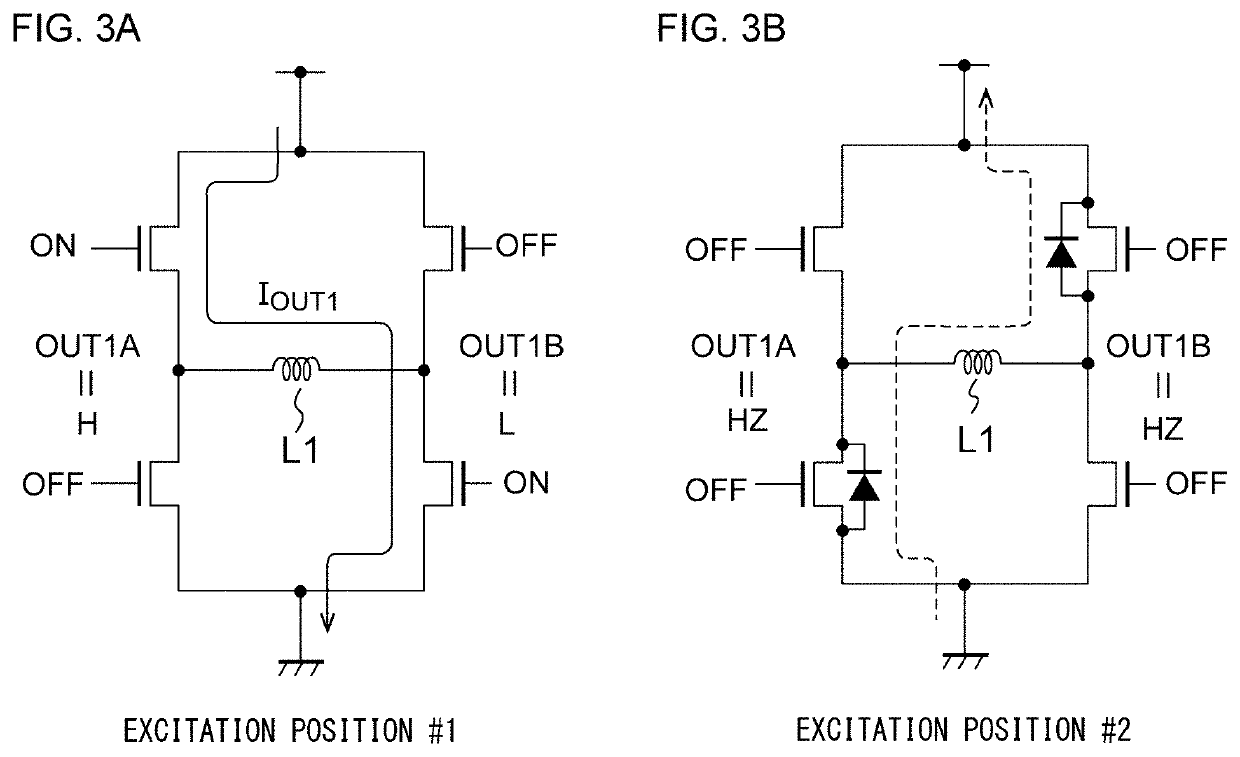Driving circuit and method for stepping motor
a technology of driving circuit and stepping motor, which is applied in the direction of electronic commutation motor control, dynamo-electric converter control, control system, etc., can solve the problems of unfavorable and distortion of stepping motor, so as to reduce the heat generation of full bridge circuit and reduce the unsteady rotation of stepping motor
- Summary
- Abstract
- Description
- Claims
- Application Information
AI Technical Summary
Benefits of technology
Problems solved by technology
Method used
Image
Examples
modification 1
[0102]In the driving circuit 200 of FIG. 9, transition is made from the inverse state to the off state in accordance with the zero-current detection signal SZC, but this is not limitative. For example, with the voltage across the coil being monitored, the coil current IOUT1 having decreased close to zero may be detected on the basis of a result of the monitoring. Alternatively, transition may be made to the off state after predetermined time passes after transition to the inverse state.
modification 2
[0103]In the embodiment, the case where the excitation position changes clockwise has been described. A similar manner is made at the time of counterclockwise rotation. A case where counterclockwise rotation is made in the 1-2 phase excitation will be described with reference to FIG. 2A. Regarding the current IOUT1 (full bridge circuit 202_1), the transition from excitation position #7 to excitation position #6 and the transition from excitation position #3 to excitation position #2 involve the phase changing. Therefore, with the timing chart of FIG. 2B inverted left and right, the inverse state needs inserting in the fronts of excitation positions #6 and #2. Similarly, regarding the current IOUT2 (full bridge circuit 202_2), the transition from excitation position #1 to excitation position #8 and the transition from excitation position #5 to excitation position #4 involve the phase changing. With the timing chart of FIG. 2B inverted left and right, the inverse state needs inserting...
modification 3
[0104]In the embodiment, the case of the 1-2 phase excitation has been described. However, the excitation method is not limited to the 1-2 phase excitation. FIGS. 13A and 13B explanatorily illustrate quarter-step drive. FIG. 13A explanatorily illustrates the excitation position of the quarter-step drive. In the quarter-step drive, an electrical angle of 360° is divided into 16 segments. Therefore, 16 excitation positions are present.
[0105]FIG. 13B is a waveform chart of the operation of the driving circuit 200 in the quarter-step drive. Focus on the coil current IOUT1, the transition from excitation position #2 to excitation position #3 and the transition from excitation position #10 to excitation position #11 involve the phase switching. Therefore, the inverse state is inserted in the fronts of excitation positions #3 and #11. Similarly, focus on the coil current IOUT2, the transition from excitation position #6 to excitation position #7 and the transition from excitation position ...
PUM
 Login to View More
Login to View More Abstract
Description
Claims
Application Information
 Login to View More
Login to View More - R&D
- Intellectual Property
- Life Sciences
- Materials
- Tech Scout
- Unparalleled Data Quality
- Higher Quality Content
- 60% Fewer Hallucinations
Browse by: Latest US Patents, China's latest patents, Technical Efficacy Thesaurus, Application Domain, Technology Topic, Popular Technical Reports.
© 2025 PatSnap. All rights reserved.Legal|Privacy policy|Modern Slavery Act Transparency Statement|Sitemap|About US| Contact US: help@patsnap.com



